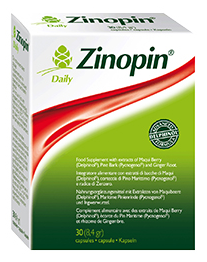DVT: The Dangers
Known as the queen of endurance cycling, Jasmijn Muller, 37, a management consultant, believed she was the embodiment of health until a pain in her leg proved to be a deep vein thrombosis (DVT). 'In May this year, I was recceing the route for my solo Land’s End to John O’Groats record attempt in 2017. The first three days were hot and I was cycling long distances at speed, so I became dehydrated. Then I got bad food poisoning and lost any remaining fluid in my body.
The next day, I felt weak and took the train, but continued cycling on days five and six. I returned home sitting in a train and a car, then spent two days working round the clock at my desk to catch up. So I had six days of relatively strenuous activity and dehydration, followed by four days of sitting down.
At 11pm on Day 10, I was sitting at my desk when I felt a strong cramping pain in my left calf, which continued despite rest and ice application. My husband mentioned DVT, but I just laughed.
The next day, I was still in pain and feeling nauseous so I went to see my GP. There was no swelling or discoloration and my risk profile apparently didn’t fit DVT, so she told me to rest. I knew the pain wasn’t just cramp so I insisted on being referred to hospital and she gave in.
Blood tests proved positive for a higher-than-normal clotting factor, which suggested a DVT, so I was sent home with an anticoagulant (heparin) to inject while I waited three days for a scan of my veins. It was a scary time, because I didn’t know what was going on or how to get reliable information.
An ultrasound of the deep veins of my left leg revealed one small clot in the popliteal vein behind the knee. I was prescribed a three-month course of oral anticoagulants to thin my blood. However, with this drug (rivaroxaban) there is no way to reverse the thinning if a serious bleed occurs, so I trained indoors on a sedentary bike because of the risk of injury outdoors.
I learned I actually had several risk factors for DVT, including taking the contraceptive pill, which I have now stopped. I also sat working for hours, so have swapped to a standing Varidesk (uk.varidesk.com). I sip water with added electrolytes all day to avoid dehydration. It was a horrible time, but I was lucky. Now I want to raise awareness about the risks.'
Jasmijn recently took part in Revolve24, a 24-hour endurance event at Brands Hatch, Kent, where her team came fourth. She is now sponsored by Isobar Compression, which makes custom-fit compression garments to reduce the risk of DVT.
WARNING: If you think you might have a DVT , do not massage the area as it can encourage the clot to break off (see Below).
WHAT IS DVT?
 A deep vein (or veinous) thrombosis is a blood clot that usually occurs in a deep leg vein that runs through the muscles of the calf and thigh. It may cause pain, swelling and tenderness in one calf, a heavy ache and/or warm skin in the area and redness, particularly at the back of your leg below the knee. The pain may be worse when you bend your foot upward towards your knee. If a DVT is left untreated, a piece of the clot may break off and block one of the blood vessels in the lungs, causing a pulmonary embolism. You should seek immediate medical attention if you have pain, swelling and tenderness in your leg and develop breathlessness and chest pain.
A deep vein (or veinous) thrombosis is a blood clot that usually occurs in a deep leg vein that runs through the muscles of the calf and thigh. It may cause pain, swelling and tenderness in one calf, a heavy ache and/or warm skin in the area and redness, particularly at the back of your leg below the knee. The pain may be worse when you bend your foot upward towards your knee. If a DVT is left untreated, a piece of the clot may break off and block one of the blood vessels in the lungs, causing a pulmonary embolism. You should seek immediate medical attention if you have pain, swelling and tenderness in your leg and develop breathlessness and chest pain.
Consultant vascular surgeon John Scurr has developed Zinopin, a natural supplement with ginger and French maritime pine bark, to help lower the risk of DVT for long-haul travellers and anyone sitting for extended periods (two hours or more). It is contraindicated in pregnancy or for those taking blood-thinning drugs. Zinopin Daily, £19.95 for 30 capsules, victoriahealth.com.

